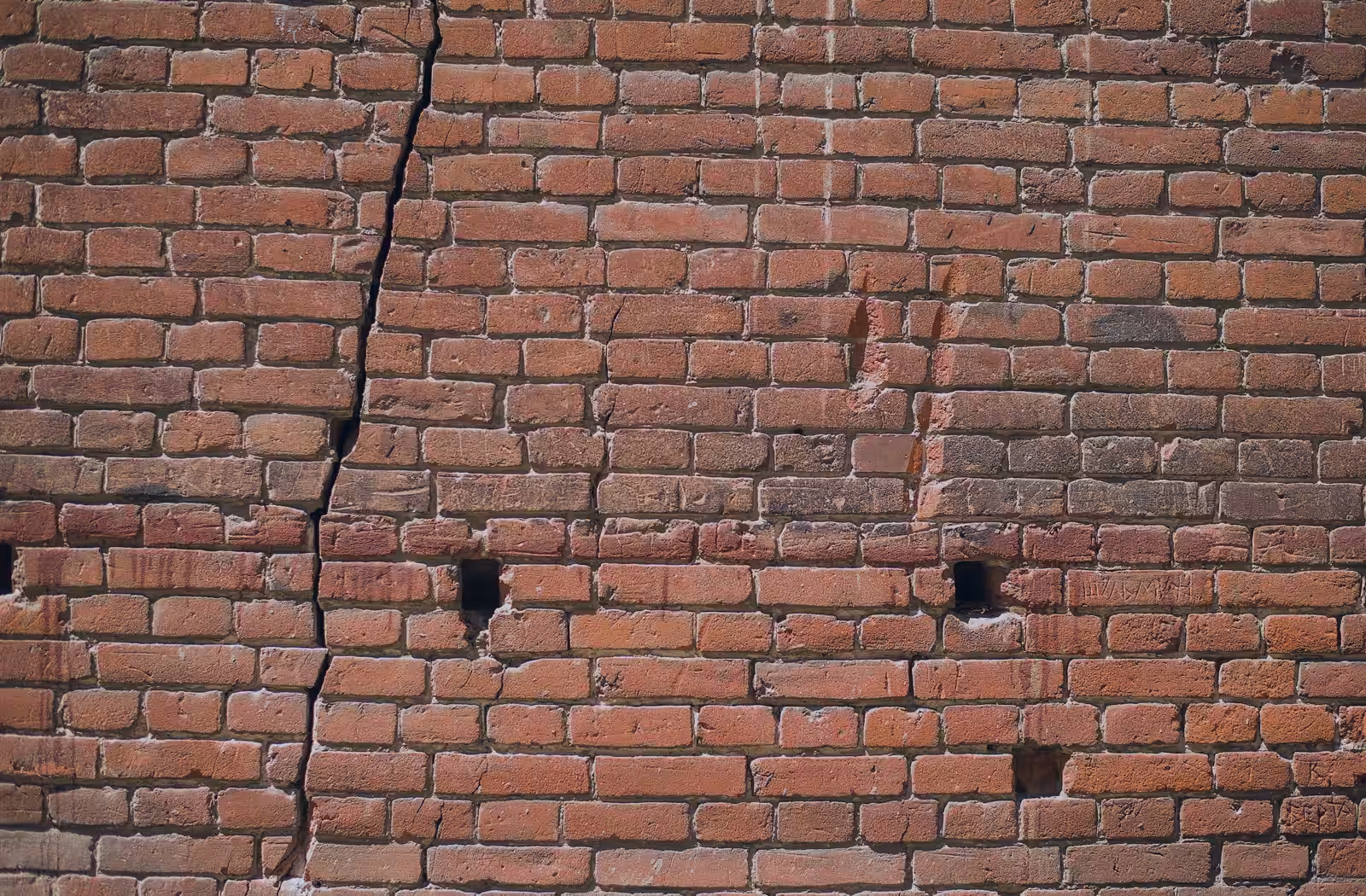What is subsidence?
Subsidence is defined as the gradual sinking of the earth’s surface beneath or around a property, which can be caused by many different factors.
Most common places for subsidence to occur in the UK
The most common place for subsidence to occur in the UK is in the southeast, including London properties, which are especially renowned for being high subsidence areas. It is also common on islands such as the Isle of Wight, and in British coastal towns.
What is the difference between subsidence, landslip, settlement, and heave?
Ground movements like subsidence, landslip, settlement, and heave can have a big impact on a property. If the ground movements are large enough, they can cause damage to structures on the property, as well as to the property itself.
Before we deep-dive into subsidence, let’s look at the different types of ground movements.
Settlement
Settlement is the gradual sinking of a structure, such as a house, caused by the weight of the building or the pressure of the earth around it within ten years of construction.
Heave
Heave is the sudden, uncontrolled upward movement of earth, often caused by a burst of energy, for example an earthquake.
Landslip
Landslip is the downward movement of sloping ground. Landslips can be caused by several factors, including erosion, earthquakes, and landslides.
What causes subsidence?
Subsidence can happen for many different reasons. Some of the most common are:
- The extraction of groundwater or oil and gas can cause the ground to subside as the water or oil is removed.
- The construction of large buildings or other infrastructure can cause the ground to subside as the weight of the structure is added
- The natural settling of the earth’s surface
- The movement of water through the soil
- When the ground below the property shrinks or swells due to the weather
- Leaking drains can wash away the soil under the home or cause the ground to become so saturated that the foundations give way
- Tree roots searching for moisture can grow under the property, causing the foundations and structure of the building to subside
Besides the previously mentioned causes of subsidence, homes built on clay are particularly susceptible to subsidence during long, dry summers because trees and shrubs suck all the available moisture from the soil. This causes buildings to shift on their foundations.
How to spot subsidence?
Spotting subsidence can be tricky. Subsidence is often confused with humidity, and changes of temperature in a home can give rise to hairline cracks.
To help you spot the signs, our expert team has prepared a list of exterior and interior signs of subsidence to help confirm your suspicions.
Exterior signs of subsidence
You may be able to see subsidence in your garden or exterior by looking for the following signs:
- Cracks in walls, floors or ceilings
- Doors and windows that are difficult to open or close
- Sticking doors and windows
- Bricks that are no longer in line with each other
- Uneven surfaces
- Dry or cracked plaster
Interior signs of subsidence
It might be difficult to spot interior signs of subsidence as it can manifest itself in a variety of ways, depending on the underlying cause. However, some of the most common interior signs of subsidence include:
- Cracks in plaster or paint
- Doors and windows that are difficult to open or close
- Bowing or cracking of walls
- Sinking of the floor
- Misaligned walls or ceilings
- Gaps between skirting boards and floors
What should I do if I spot signs of subsidence?
If you suspect that your property is suffering from subsidence, we recommend that you get in touch with a qualified surveyor to carry out a survey to determine the cause of the subsidence and further actions.
Can subsidence be prevented?
Subsidence can catch property owners off guard as it can arise from a number of factors, many of which are outside of our control. As always, prevention is better than cure, but it can be difficult to prevent subsidence.
When able, the most common way to prevent subsidence issues is during property renovations, when a homeowner can underpin the property to strengthen its foundations.
Other effective ways to prevent subsidence are to reduce the amount of groundwater pumped from an aquifer and to manage land use in a way that minimises the amount of stress placed on the ground.
For mature trees close to the property, make sure they’re carefully managed. Seek advice from a tree surgeon for larger trees.
How much does subsidence devalue a property?
Subsidence does not so much devalue a property as it renders a property extremely difficult to sell. Mortgage lenders will require the peril of subsidence covered as a prerequisite for a mortgage offer. If subsidence cover is not included on a building insurance policy, the mortgage lender will most likely withdraw the offer.
Our team has seen this happen on many occasions, which causes heartbreak as people lose out on their dream homes. To best avoid this pitfall, make sure you do your research on your potential purchase to understand the subsidence history.
How much of a property’s history of subsidence do you have to declare for insurance?
When insuring the property, the question that is asked on the statement of fact is ‘Has your property ever suffered from subsidence, landslip or heave?’ That’s why, if you’re aware of any history of subsidence, you should declare it.
That said, some insurers will not take previous subsidence history into account if the subsidence event happened more than 10 years ago. To have access to such insurance products, you need to get in touch with specialist insurance brokers like Stanhope.
Subsidence projections for the next 50 years
According to GeoClimate UKCP18 projections, we can expect to see an increasing number of homes in the UK affected by subsidence as well as other types of ground movements driven by climate change.
Does home insurance cover subsidence?
Ultimately, this depends on the insurer. However, you must declare any current or past subsidence when taking out your policy, so you can avoid any future claims being rejected. Insurers may not cover your property at all if the subsidence is due to settlement, shrinkage or expansion, coastal or river erosion, or demolition, structural changes or repairs to your home.
What is subsidence insurance?
Subsidence insurance is a type of insurance policy that covers the cost of repairing damage to a property caused by subsidence. This type of insurance can help protect the value of your property and ensure that you can make repairs if necessary.
You may benefit from subsidence insurance if:
- You have previously experienced subsidence, heave, or landslip at the property
- You are categorised as living in a subsidence area
- Your property was previously underpinned
- Your property is showing signs of historical movement in a surveyor’s report
- Your historical buildings are showing signs of movement
Insure your home with subsidence insurance – take advantage of our tailor-made insurance solutions by contacting our specialist insurance broker team.
Get a quote now
Really impressed with the personal service this company gives; the speed the quote was offered and then emails to confirm phone conversations. You talk to a ‘real’ inteligent person who knows what they are talking about, knows the insurance industry and can appreciate your needs. Impressive, especially Beth.
5 Star Review ReviewsIO

